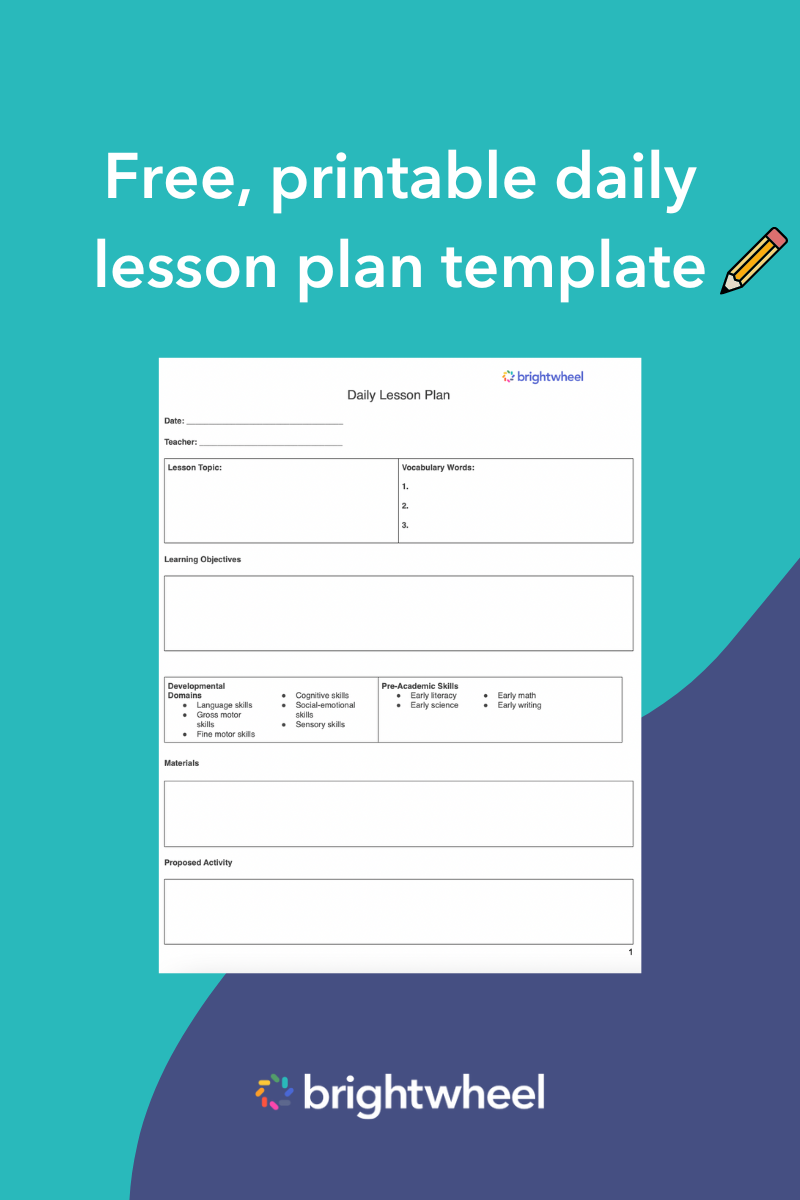In a preschool classroom, structure and routine play vital roles in fostering an effective learning environment. One effective tool for achieving this is the use of visual schedules. Visual (or picture) schedules not only help children understand the daily flow of activities but also aid in reducing anxiety by providing a predictable and consistent routine.
These schedules cater to various learning styles and developmental needs, making it easier for children to transition between tasks and enhance their focus and engagement. In this article, we delve into the importance of visual schedules in preschool settings and offer tips for creating your own.
What is a visual schedule?
A visual schedule is a series of pictures representing a sequence of activities or events. These schedules break down tasks into simple steps and provide visual cues for each routine stage.
These schedules combine images, photographs, graphics, and words to achieve their purpose. In essence, visual schedules guide children on where they need to be, what tasks to perform, and when to do them.
Daily Lesson Plan Template
Use this template to develop effective lesson plans for infants, toddlers, and preschoolers.
Benefits of visual schedules
Visual schedules are easy to implement and can be used with children of all ages. Below are some of the many benefits of visual schedules:
Provides structure and predictability
Structure and routine are important for children to thrive in various settings such as home and school. Creating daily or weekly routines for children to follow can provide a sense of consistency and security, but they’ll need support sticking to their schedules.
This is where a visual schedule comes in handy. A clear reminder of each day’s task on a visual schedule can provide much-needed structure and organization for educators and children.
Keep families engaged with their child's daily learning and schedule in the classroom with brightwheel's communication app. Send real-time messages to an individual family or an entire program and easily create newsletters that include important announcements or classroom highlights.
Increases understanding
According to a Journal of Education and Practice study, children learn better and understand things that are explained to them visually. Children can stay on track without feeling overwhelmed or stressed.
Teachers can use picture schedules to illustrate steps a child takes during meal times. Likewise, they can also use visual schedules to teach about personal hygiene.
Improves engagement
Since children have shorter attention spans than adults, teachers may experience challenges capturing and maintaining children’s attention for extended periods. By introducing visual schedules, children will have simple, predictable steps to follow that will become habits over time, thus improving engagement in the learning process.
Minimizes anxiety
Anxiety in children can negatively impact their learning and how they relate to teachers, peers, and their environment.
Some children may experience anxiety over what will happen next in their day. A visual schedule can provide structured predictability that will help minimize any worry.
Encourages independence
It can be challenging for children to complete complex tasks without assistance and guidance. However, visual schedules provide step-by-step actions to help them do things independently.
Children can learn to manage their time effectively, make better decisions, and remain organized throughout the day with visual schedules.
Boosts confidence and self-esteem
Children’s inability to complete tasks can be frustrating, affecting their self-esteem and confidence. Visual schedules can make learning easy, which can help boost confidence in their skills and encourage their continued growth.
Helps manage challenging behaviors
Some children may resist following a daily schedule or moving between activities. For some, transitions may cause frustration or anxiety, leading to challenging behaviors.
Implementing visual schedules can provide a cue for the next transition or activity, making schedules more manageable and allowing children to plan for what’s next. The clear pictures and graphics, along with simple, actionable steps, helps children understand the sequence of events for a particular activity, helping to minimize any anxiety or frustration.
Placing visual schedules in strategic places can also help reduce challenging behaviors. For example, post your end-of-day routine near the classroom door so children have a visual cue on what steps to take as they prepare to leave each day.
How to make a visual schedule
While there are visual schedule templates available, you can also create your own. Creating your own visual schedule allows you to customize it to meet the needs of your classroom, curriculum, and children’s development.
Here’s a step-by-step guide on how to make a visual schedule:
- Step 1: Identify a routine to focus on. For example, you can select a routine to do every mid-morning during snack time or at the end of each day.
- Step 2: Break down the activity into actionable steps.
- Step 3: Decide how long the schedule will last. Depending on your children's abilities, you can start with shorter-duration schedules and then upgrade to more complex activities.
- Step 4: Choose appropriate visual formats. Photographs, recognizable graphics, universal symbols, and text paired with images are all suitable visual formats. Personalize them to make them more relatable. Include photos of the individual child completing the steps of the process.
- Step 5: Put your visual schedule together using a free program like Microsoft Word, Google Sheets, or Google Slides. Alternatively, you can consider graphic design software like Adobe Photoshop or Canva if you’re familiar with graphic design.
- Step 6: Help children familiarize themselves with the visual schedule. Introduce them to the picture schedule, tell them what it’s about, and show them how to follow it.
- Step 7: Acknowledge a child’s hard work (i.e., “you did it!") when using the schedule or completing a task independently.
Wrapping up
A child’s early years are the most crucial as they set them up for success in adulthood. Incorporating visual schedules early on can benefit children’s holistic growth and development, teaching them valuable skills of organization, confidence, and independence.



